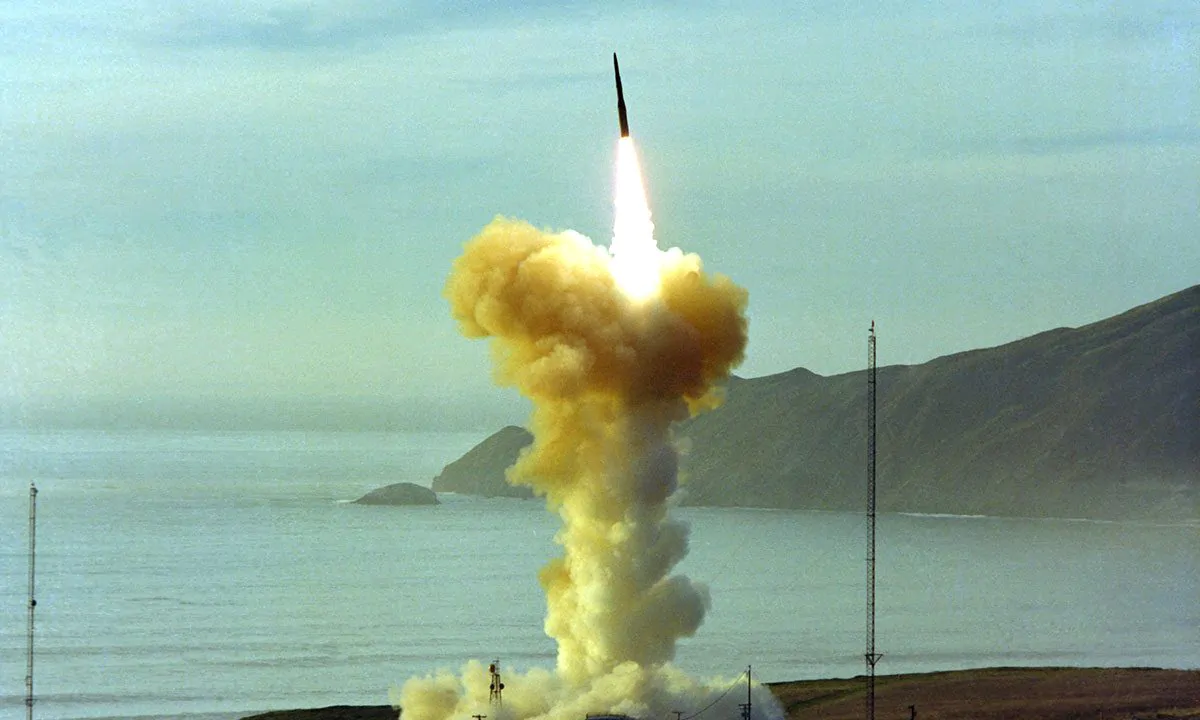For nearly 50 years, men and women have worked in underground bunkers, watching over the missiles that have acted as a deterrent to attacks on the U.S. since the time before there was an Internet, before cell phones or fax machines.
The Minuteman intercontinental ballistic missile system began its watch in 1962 and is still today at the ready, if called upon, to deliver nuclear warheads toward hostile targets thousands of miles away.
Retired Air Force officer Don Adams now works as a systems engineer for Boeing in Huntsville, but before that spent a career commanding and then maintaining the Minuteman III system, the last iteration of the country’s land-based ICBMs.
“Most people get into missiles and it’s not something that they want to do,” Adams said, but he enjoyed his work.
During his 27-year career in the Air Force Adams worked as a missile crew member, an instructor of missile operations and in missile maintenance as chief of ICBM maintenance at the Barksdale Air Force Base in Louisiana, and finally as maintenance group manager at the Francis E. Warren Air Force Base in Wyoming.
“Everything I touched in Minuteman had Boeing’s name on it,” Adams said, so he was happy to go to work for the company that made the missiles he looked after all those years.
The Minuteman system, now capable of delivering a warhead to targets as far as about 8,083 miles away at 15,000 miles an hour, was first put on strategic alert on Oct. 26, 1962, when the U.S. learned that Russia had placed nuclear missiles on Cuba.
The Alpha-06 launch facility at Malmstrom Air Force Base in Great Falls, Montana became the first to be put on alert, and after 13 tense days Russia backed down and removed missiles from Cuba. President John Kennedy is said to have later referred to the Minuteman system as our “ace in the hole,” although some researchers have said Kennedy never said the phrase.
“That wing is called the “First Aces” for that reason,” Adams said.
Today, there are around 440 solid-fueled Minuteman III missiles, kept at the Malmstrom Air Force Base, the Minot Air Force Base in North Dakota and at the F.E. Warren Air Force Base.
One of the biggest challenges with keeping these aging missiles up, Adams said, is sourcing the parts to do so. Over time some of the companies that made components are no longer in business, and some parts have had to be reverse engineered and built from scratch.
“A lot of technology differences that we’ve had to deal with,” Adams said, but over the years those missiles have been gone over from top to bottom. New propulsion and guidance systems, and the launch facilities themselves have had extensive upgrades over the years, he said.
One thing that can’t be helped is the harsh weather at those missile silos, Adams said, but that comes with the job of a missile crew member.
“It’s not uncommon to be out in a missile field, 25 below zero with a 40 knot wind blowing, and they’re out there keeping America safe. Keeping these things on alert,” Adams said. “You’ve got a lot of dedicated people who are just good Americans doing what what they should be doing, and what they need to do.”
“It really comes down to people,” Adams said. “You’ve got really well-trained airman who are dedicated to their job and they understand the importance of the nuclear mission.”
The Air Force is to replace the Minuteman III system in the late 2030’s with a new next-generation nuclear ICBM Ground Based Strategic Deterrent system, so the Minuteman III will remain at the ready for another 20 or so years.




















































